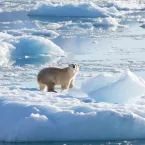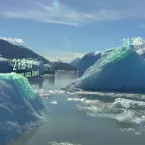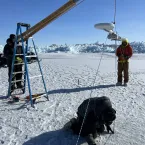Our Research
As climate changes, how do Earth's frozen areas affect our planet and impact society?
In this section
Related News & Stories
Filter by:

News Release
Scientists have documented a previously unknown subpopulation of polar bears living in Southeast Greenland. The polar bears survive with limited access to sea ice by hunting from freshwater ice that pours into the ocean from Greenland’s glaciers.

Spotlight
The NASA National Snow and Ice Data Center (NSIDC) Distributed Active Archive Center (DAAC) archives and manages data from the NASA Ice, Cloud, and land Elevation Satellite-2 (ICESat-2). Here is a snapshot of the ICESat-2 mission and its data.

Analysis - Snow Today
Snow-covered area for the western United States was 119 percent of average for May with above average snow cover in the North outbalancing below average snow cover in the South. Snow cover days remained well below average...

ELOKA Spotlight
Between April 14 and 24, 2022, Matt Druckenmiller and Josh Jones from Alaska Arctic Observatory & Knowledge Hub (AAOKH), traveled to Utqiaġvik, Alaska, to map and survey ice conditions on trails used by local whaling crews.
Analysis - Sea Ice Today
Sea ice extent near both poles was again below average, but higher than in recent years for most of the month.

Spotlight
The NASA National Snow and Ice Data Center Distributed Active Archive Center (NSIDC DAAC) offers an interactive tool called IceFlow to harmonize nearly 30 years of lidar data.